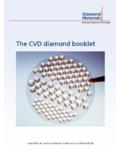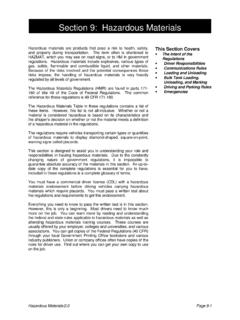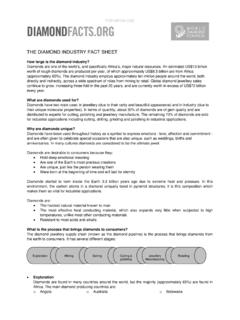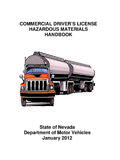Transcription of DIAMOND BRITE - SGM
1 Pool, Spa & Fountain FinishesDIAMOND BRITEE xposed Aggregate Pool FinishDiamond BRITE Finishes are factory blends of DIAMOND Quartz , select aggregates and polymer-modified Portland cement. This unique blend is ideal for new or existing submerged surfaces in gunite, shotcrete and concrete Swimming Pools, Spas and Water Features. Available in a variety of colors and textures. Various hues and aggregate sizes are available to fit any design requirement. DIAMOND BRITE finishes are factory blended to provide the pool owner with an extremely durable and attractive alternative to traditional white pool coatings. Superior Bonding High strength and rapid curing Extremely etch resistant Application can be completed the same day Aggregate exposure evenly controlled Easily PumpableMANUFACTURER: SGM, SW 2nd Place Pompano Beach, FL 33069-3220(800) 641-9247(954) 943-2288 Fax: (954) 943-2402 PREPARATION:Examine pool surfaces to identify conditions that might interfere with proper bonding of coating.
2 Look for algae, mold, mildew, dirt, paint, mortar droppings, efflorescence, patching compounds, loose tile, cracked plaster, etc. Identify hollow spots in plaster by pool surfaces of all material that might interfere with proper bonding of coatings. Clean with high-pressure water or by sand blasting. Wash with chlorine until algae, mold, and mildew are gone. Wash oil and grease spots using trisodium phosphate or equivalent and water; soak if necessary. Remove all cleaning solutions via high-pressure and repair all hollow and delaminated plaster. Saw cut an area 3 inches around bad spots and remove plaster inside the saw cut. Undercut the edges of remaining plaster. Fill holes with specified patching cement (SGM Mortar Mix & Southcrete 25 Acrylic Admix) to level of existing loose tile and fittings; undercut existing plaster 2 inches below the tile line, and around return lines and fittings to a depth of 3/8 inch.
3 Stop water penetration from outside pool. Plug cracks and leaks around fittings using hydraulic cement (SGM Dynamite Pool Patch). Etch cleaned surface with muriatic acid solution. Use concentration necessary to clean and roughen surface; smooth surfaces may require higher concentration. Neutralize surface with solution of baking soda and water to eliminate acid residue, which can cause bond failure. Remove remaining acid solutions via high-pressure washing. Plug pool inlets and outlets to prevent clogging with expandable plugs or threaded caps. Mark location of fittings using tape on coping or on a measured drawing. Place sump pump at main drain to remove all running and standing water. Do not begin installation until concrete pool shell has cured at least 28 renovation projects (plastering over an existing plaster pool finish) and poured or formed concrete shells apply SGM Bond Kote as directed.
4 Allow Bond Kote to cure for at least 6 hours before plastering. Plaster should be applied to SGM Bond Kote within 3-5 days. If left for a longer period before finish is applied, ensure Bond Kote is clean and free of dirt, efflorescence and other contaminants. If necessary, clean Bond Kote by brushing vigorously while spraying with water; chlorine may be used as needed. MIXING: DIAMOND BRITE is made in batches of 4,000 to 20,000lbs (1,800 to 9,000 kg.) using natural ingredients. For this reason there will be variations in shade between batches. Batch numbers are printed on the end of each individual bag. It is important that the user follow these instructions carefully to ensure the most consistent color throughout the pool. 1. Separate the bags according to the batch numbers on the bottom of each bag.
5 Record all batch numbers. Warranties submitted without valid batch numbers are VOID. 2. Blend different batches together in each mix according to the ratio present at the job site. For example: If there are 30 bags total on the job and there are 20 bags of Batch A and10 bags of Batch B then use 2 bags of A to 1 bag of B in every Coverage: each 80 lb. bag will cover approximately 22 - 25 sq. ft., to a thickness of minimum 3/8 - 1/2 .Surface roughness affects coverage rates. 3. The shelf life of DIAMOND BRITE is up to one year in unopened properly stored container. DIAMOND BRITE can be mixed by using low-speed paddle mixer, low rpm drill with mud paddle, ribbon blender or concrete plaster mixer. Measure and add 1 to 2 gallons ( to L) of clean potable water to mixer.
6 4. Hold back a portion of the water and add as necessary as mixing progresses. Lower water to cement ratios will produce plaster of greater strength and density. Therefore it is best to use as little water as needed to produce a workable mix. Excess water will reduce strength and increase shrinkage (check) cracks. Note: Mix water quality is extremely important. Well water or water high in metal and mineral content will cause discoloration in finished DIAMOND BRITE . Additionally, water of high hardness or alkalinity will cause the plaster to effloresce, releasing high levels of salts that produce calcium scale. This is especially true of colored DIAMOND BRITE such as Midnight Blue, Onyx, Tahoe Blue and French Gray. Check mix water for metals, minerals, hardness and alkalinity before using.
7 Start mixer and add DIAMOND BRITE as quickly as possible to ensure that all the material has the proper mix time. Mix for a minimum of 5 minutes but no more than 10 minutes. This ensures even distribution of aggregates and increases the working time of the plaster. Insufficient mix time will result in uneven setting and shade variations. Too much mix time will produce an overall weaker plaster and may entrain undesirable air bubbles. As a rule of thumb, mix for only the amount of time required to produce a consistent, homogenous mix. Calcium Chloride may be used as an accelerator. It must be fully dissolved in water allowing impurities to settle out. Pour off the solution from the top being careful not to add impurities to the mix. The impurities found in calcium chloride flake and pellets have been known to cause discoloration in pool plaster.
8 No more than 2% by weight of cement (about 1/2 lb. per bag) can be used. Overuse may cause discoloration. PUMPING:Although it is not necessary to use a plaster pump, many contractors do. Included here are some helpful hints for successful pumping. Increase the size of the pump manifold from 3 to 4 . Change the valve ball from plastic to steel to improve longevity. Set plaster pump to the lowest gear by moving the belt. Always begin pumping with a full stroke on the main piston. This is accomplished by advancing the wheel until the cam is at its highest position. Prepare a slurry of cement and water or pump aid and run it through the pump first to prime the pump and lubricate the hoses. Pour the mixed plaster slowly into the pump hopper. Do not pour all the material in at once. Agitate the material in the hopper to prevent separation of the cement and aggregate.
9 Avoid unnecessary stopping during the pumping process. DIAMOND BRITE aggregate will tend to settle in the pump manifold and hoses when the pump is stopped. Agitate the remaining material left in the hopper to reduce clogging. Do not try to clear a blockage using the pump. Disassemble and clean the manifold and hoses when clogged. Do not over-water mix. This will only cause the material to separate, clogging the pump and hoses. APPLICATION:Substrate should be cool and damp but not dripping wet. Mist the shell with cool, clean potable water. Non-absorbed water may be removed by using sponges and/ or air. Standing water will weaken DIAMOND BRITE and may cause washouts. Note: Hot, dry shells will cause rapid setting of the plaster and result in check or shrinkage cracking and delamination. All materials and effected areas should remain above 50 degrees F (10 C) or below 100 degrees F (38 C) 24 hrs.
10 Prior and 72 hrs after placement. Discard unmixed material (lumps). Apply plaster liberally with flat side of trowel using sufficient pressure to key in a scratch coat on the vertical surfaces. Beginning with the shady walls and working to the sunny walls, trowel a scratch coat onto the walls and allow to set up until it becomes tacky. The set time will vary according to the temperature and humidity. Once the scratch coat has become tacky, apply a finish coat to the entire pool surface beginning in bowl area and working toward the shallow end, troweling and blending walls and floor together to achieve a seamless appearance while working to a final thickness of one-half inch ( ) (10 mm-12 mm). Uniform troweling will help to ensure even exposure, reduce washouts and produce a comfortable slip-resistant finish.








